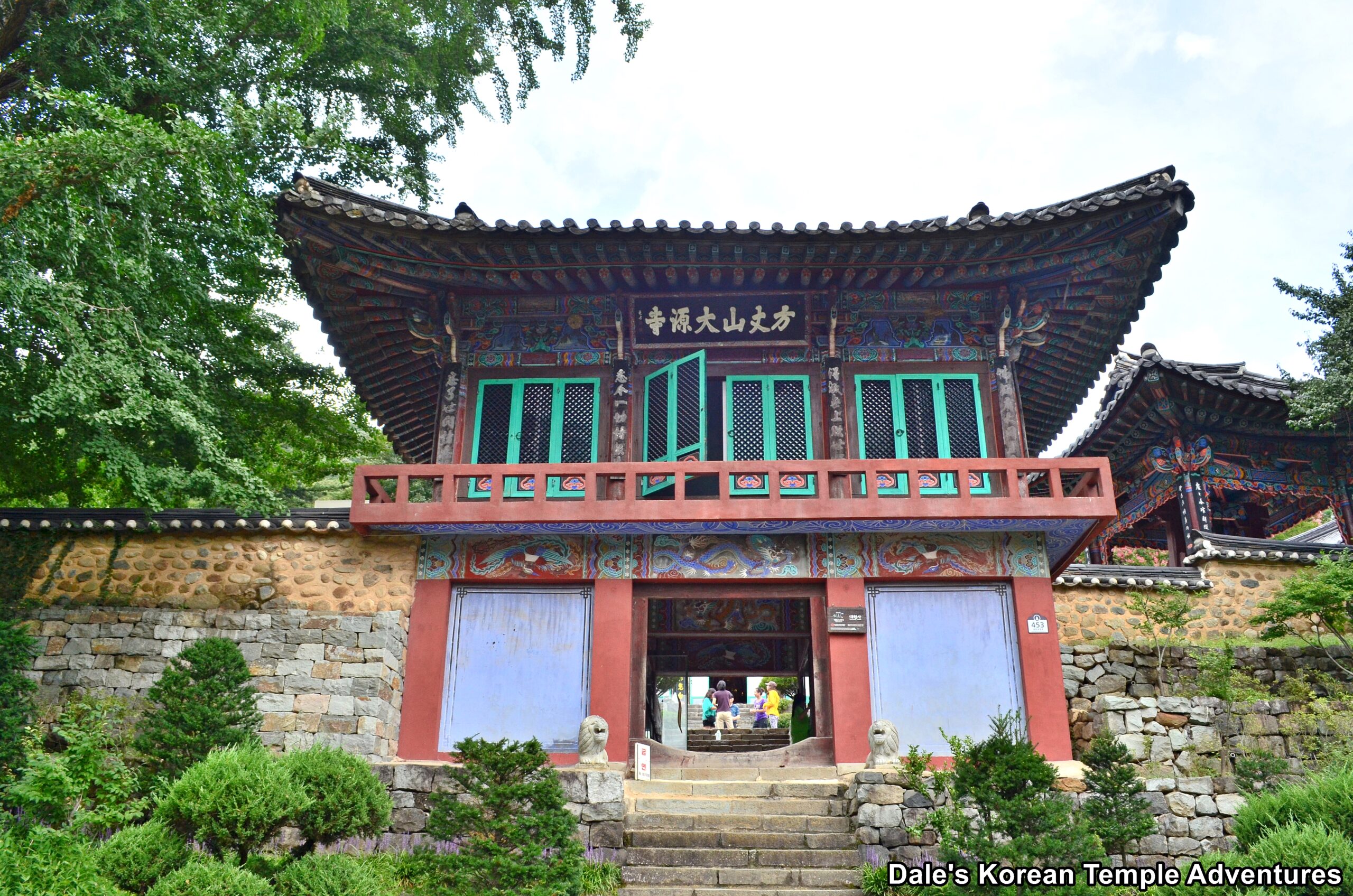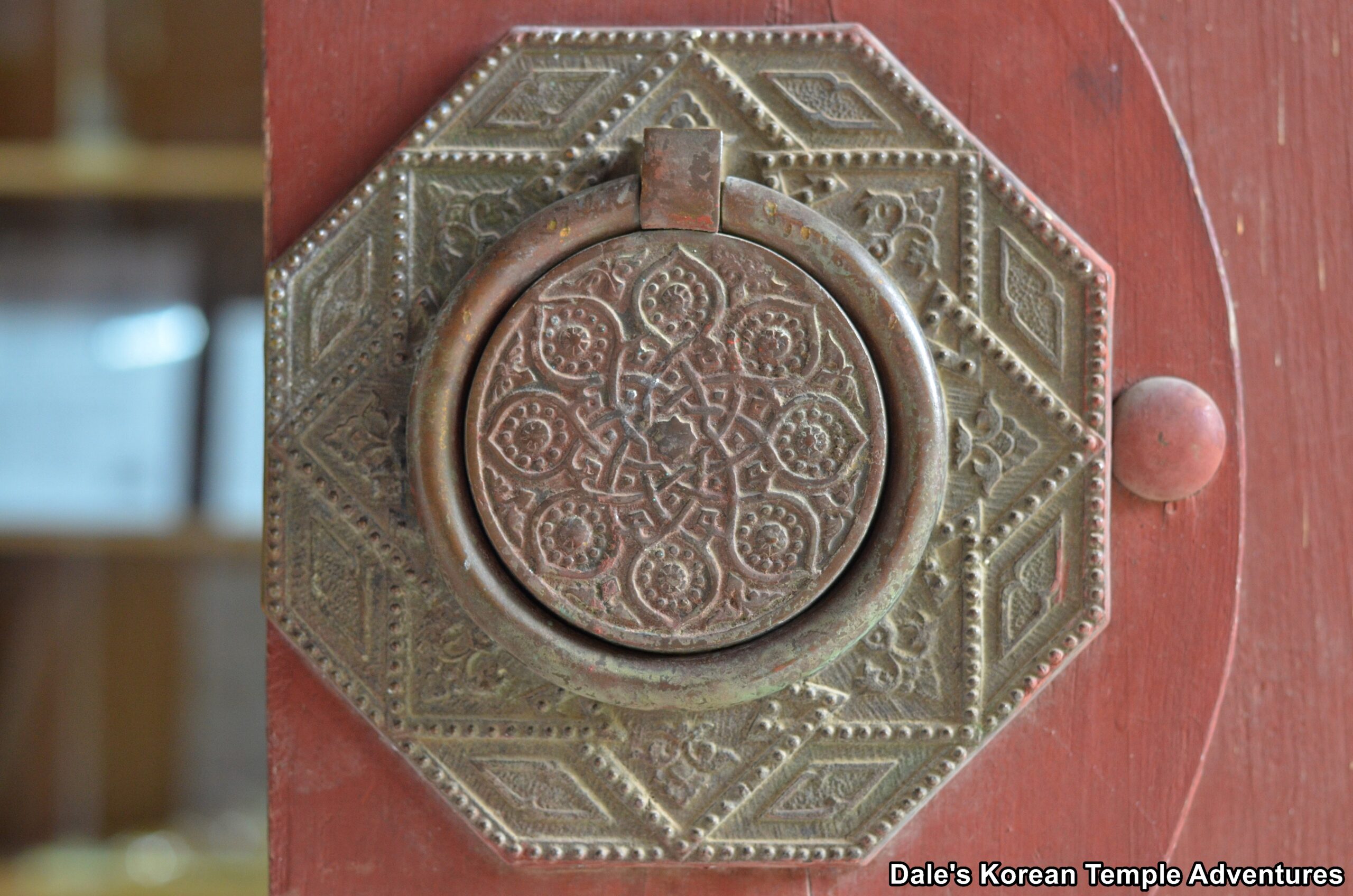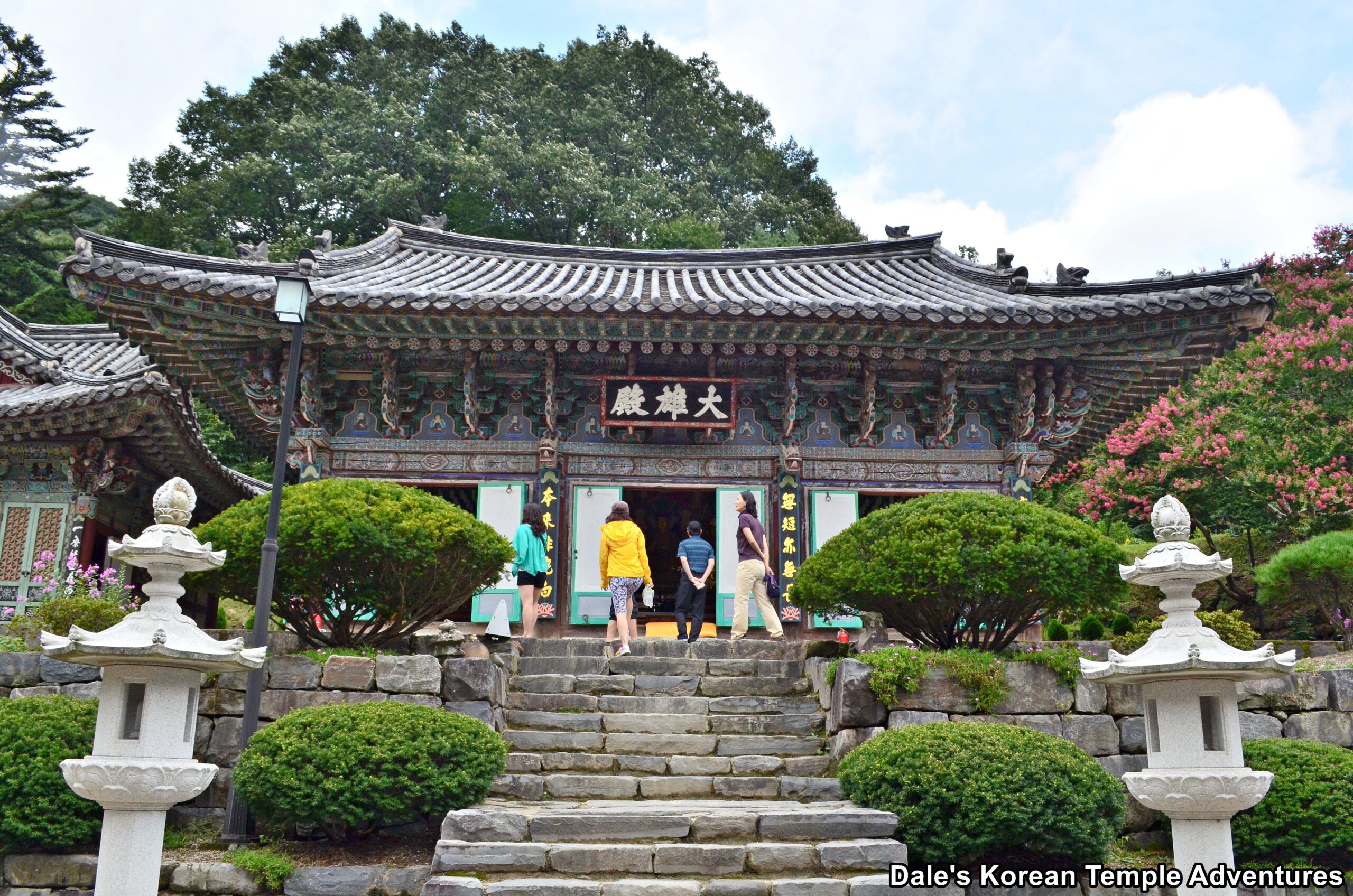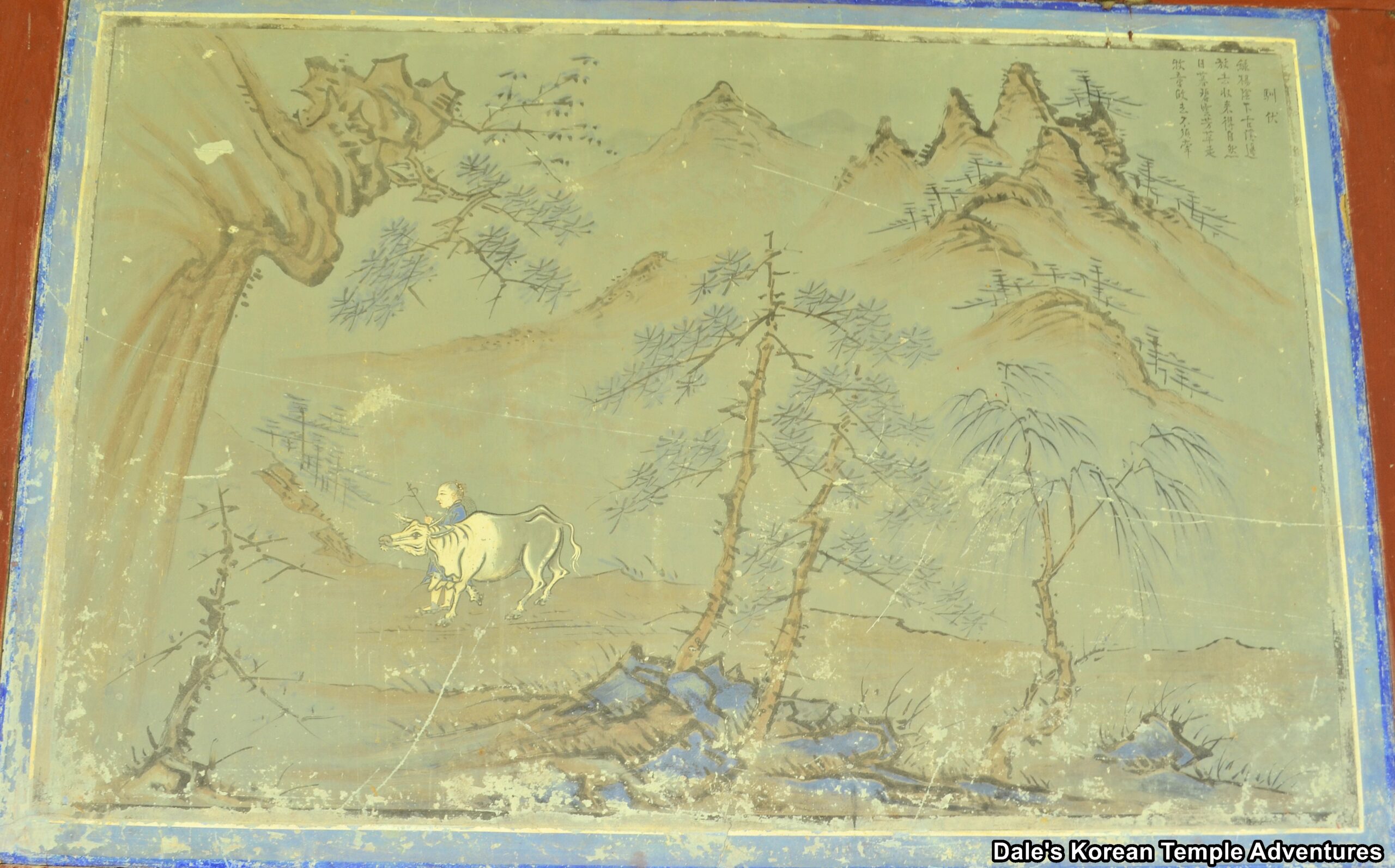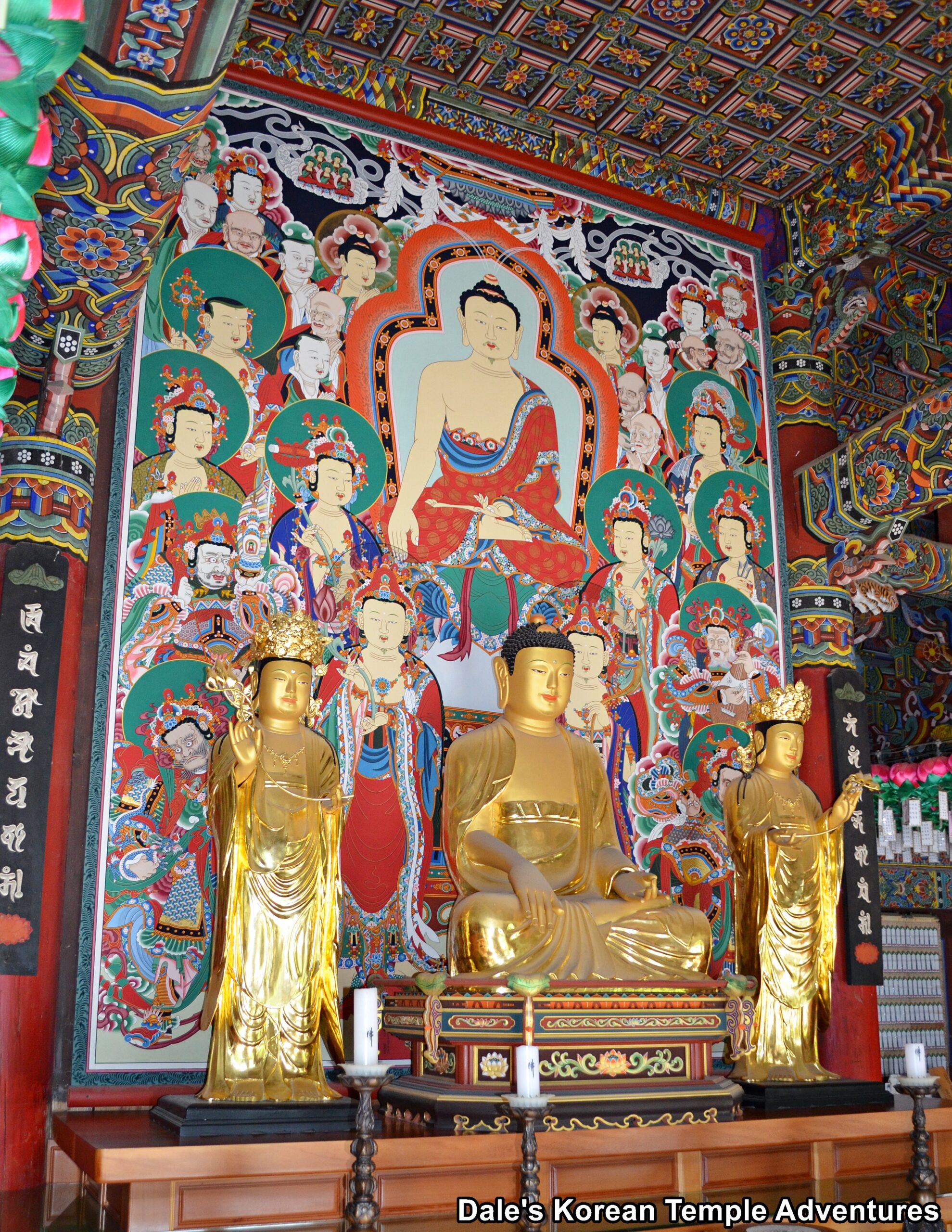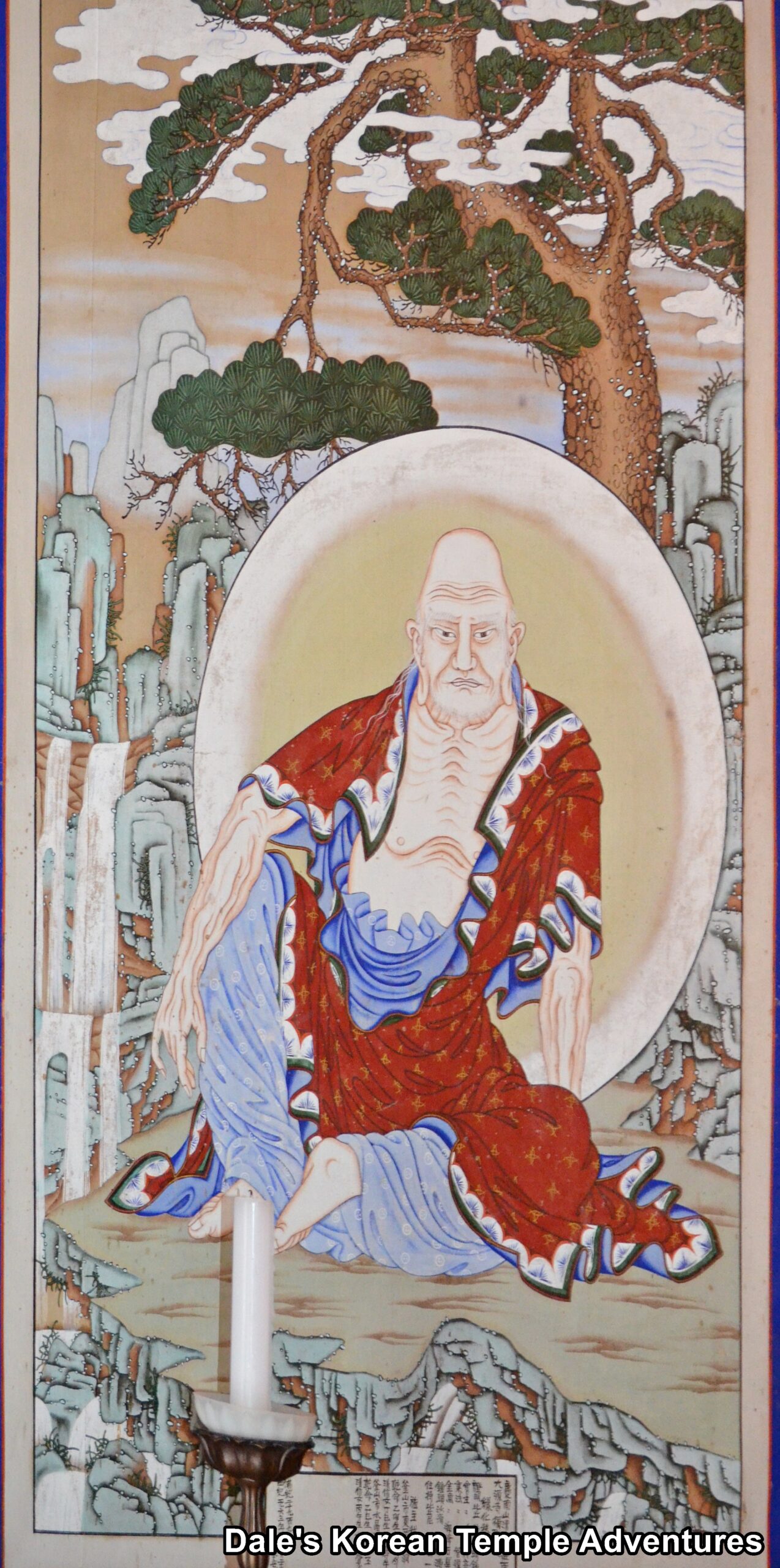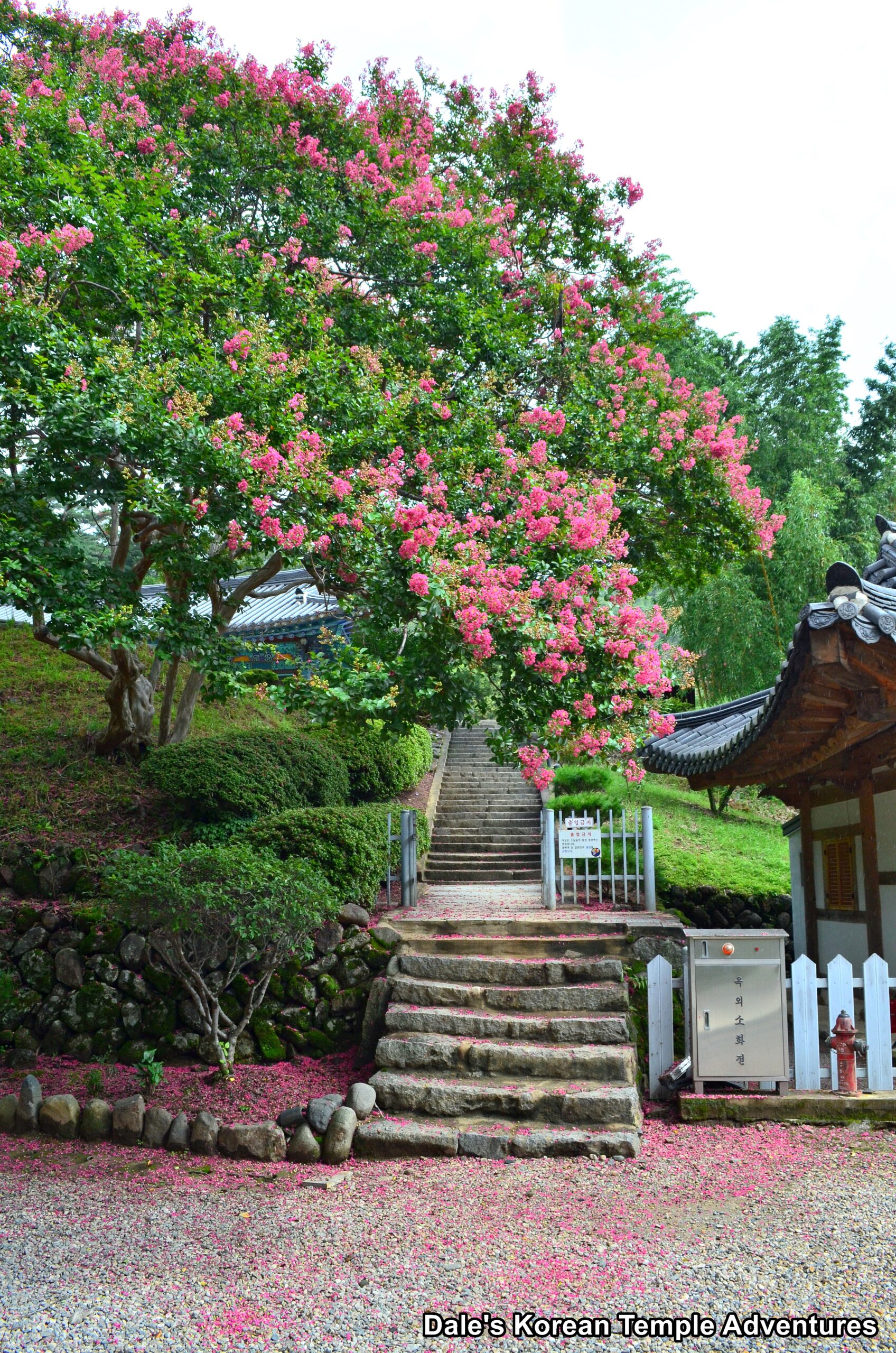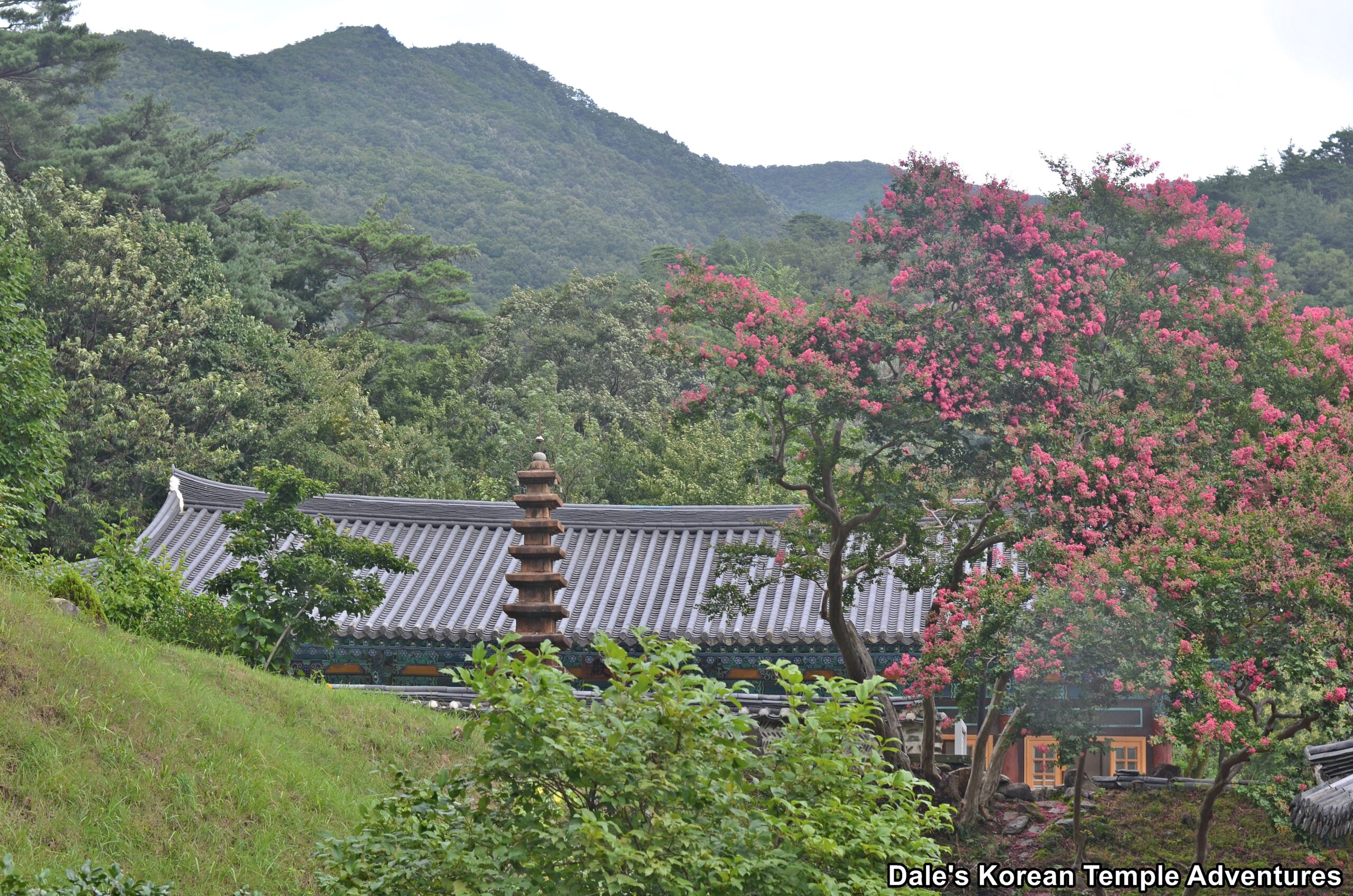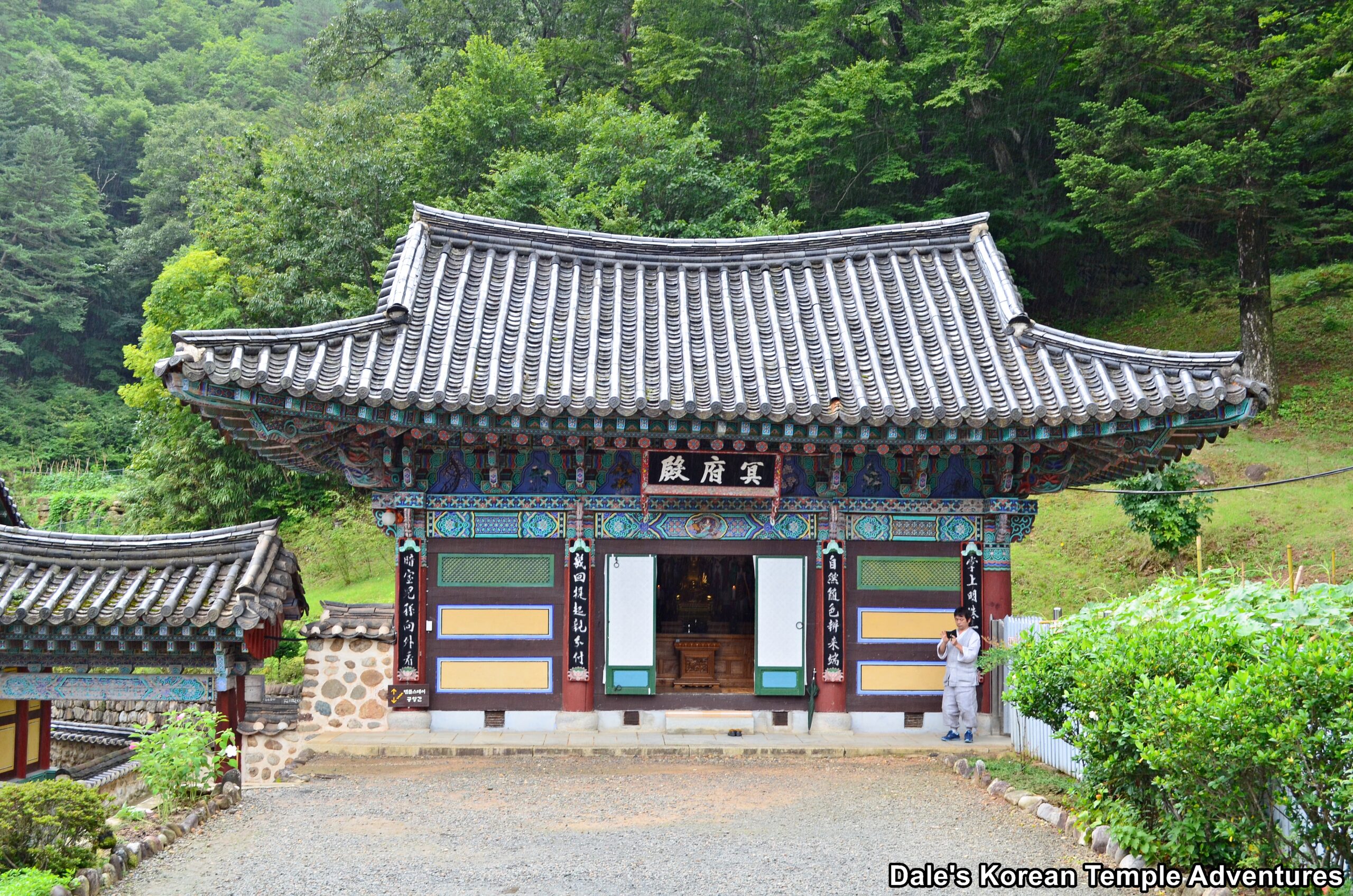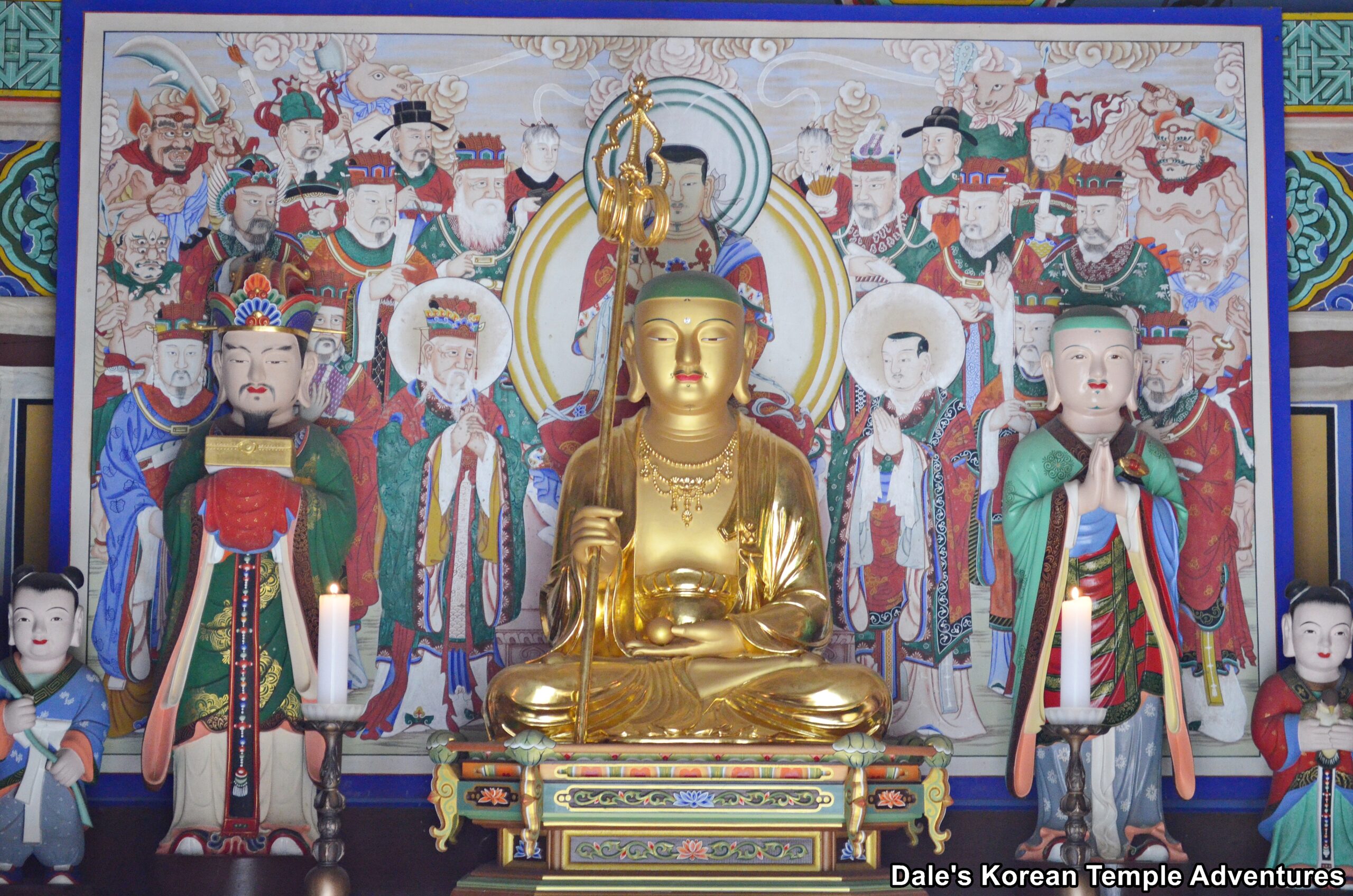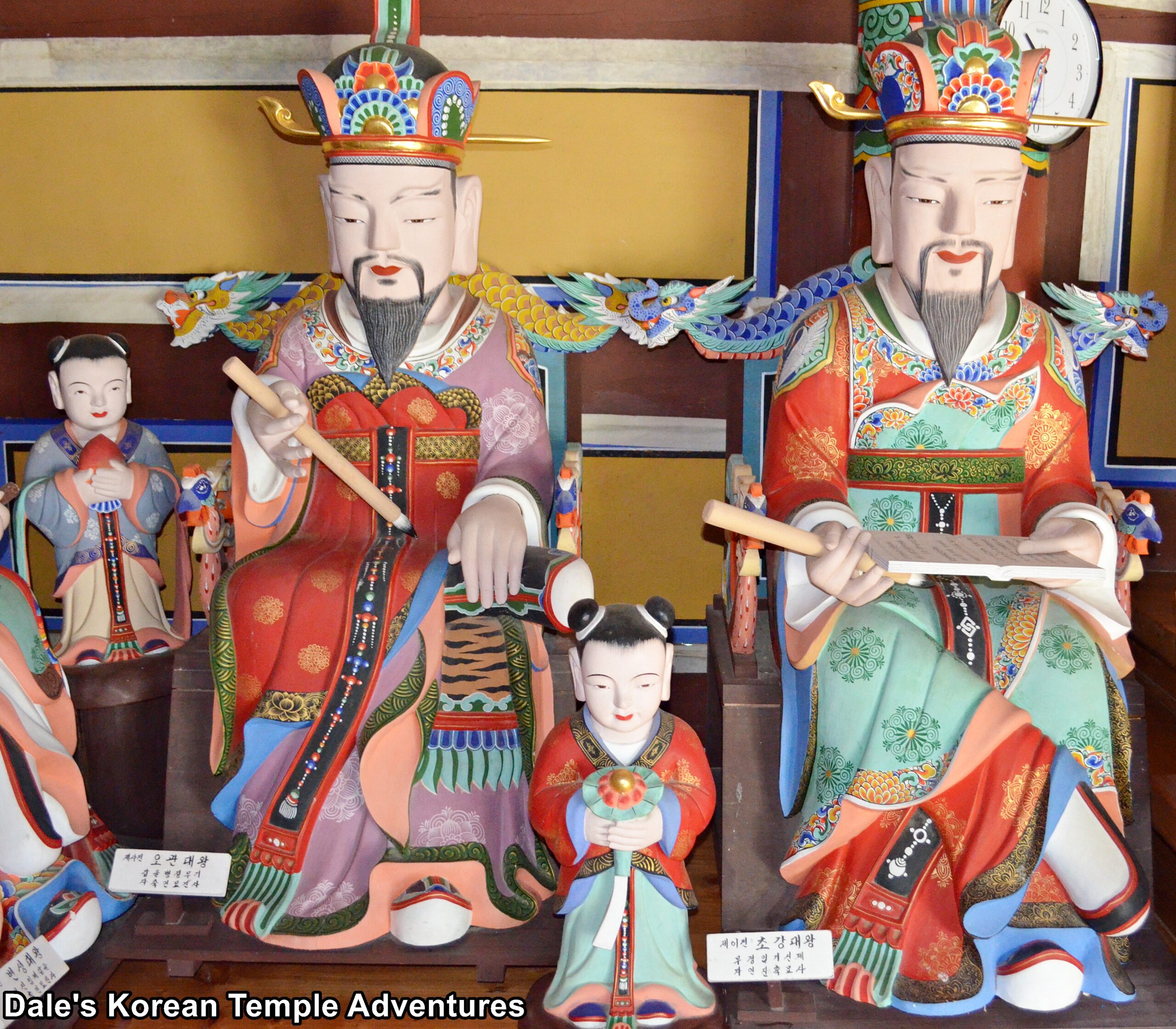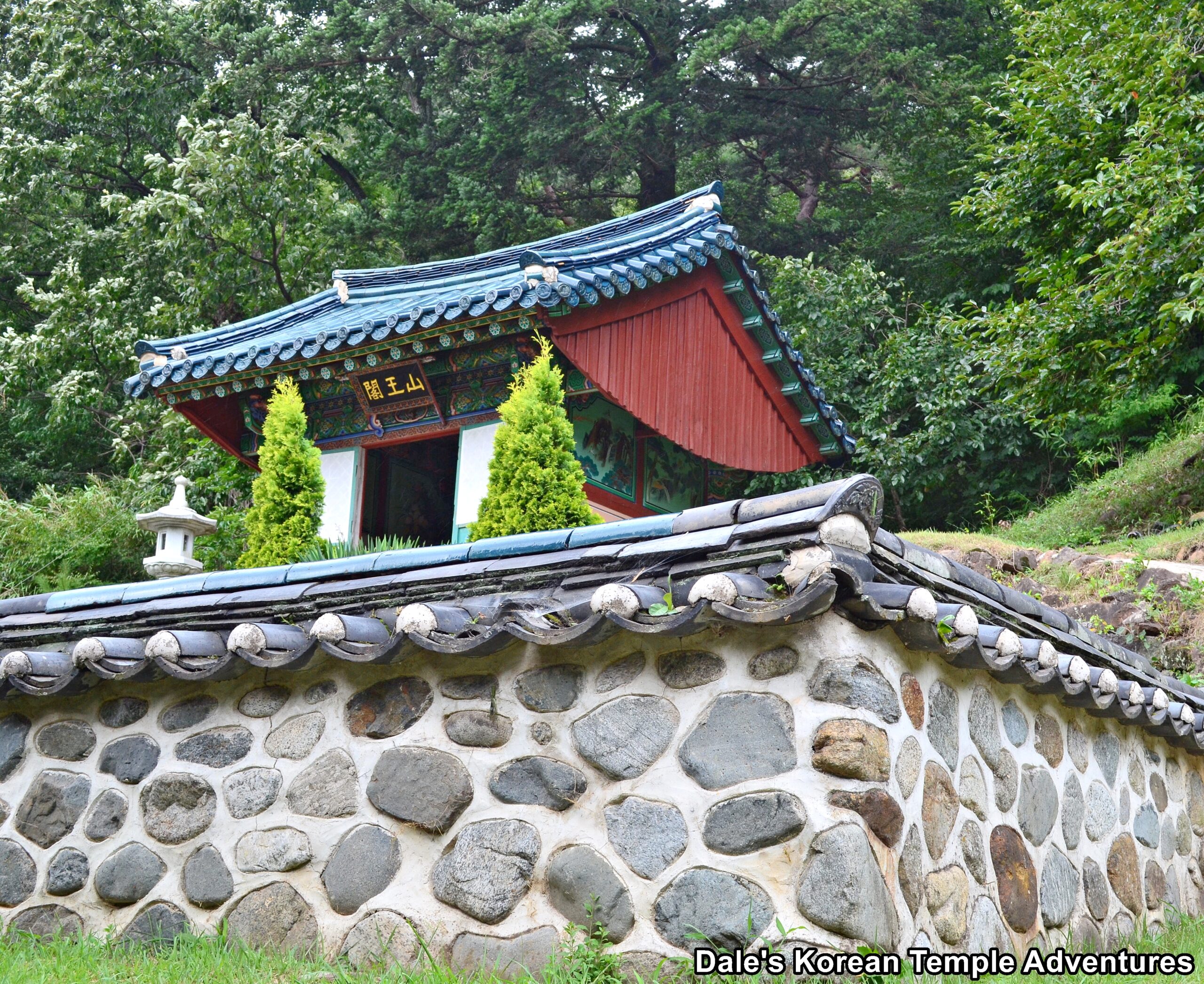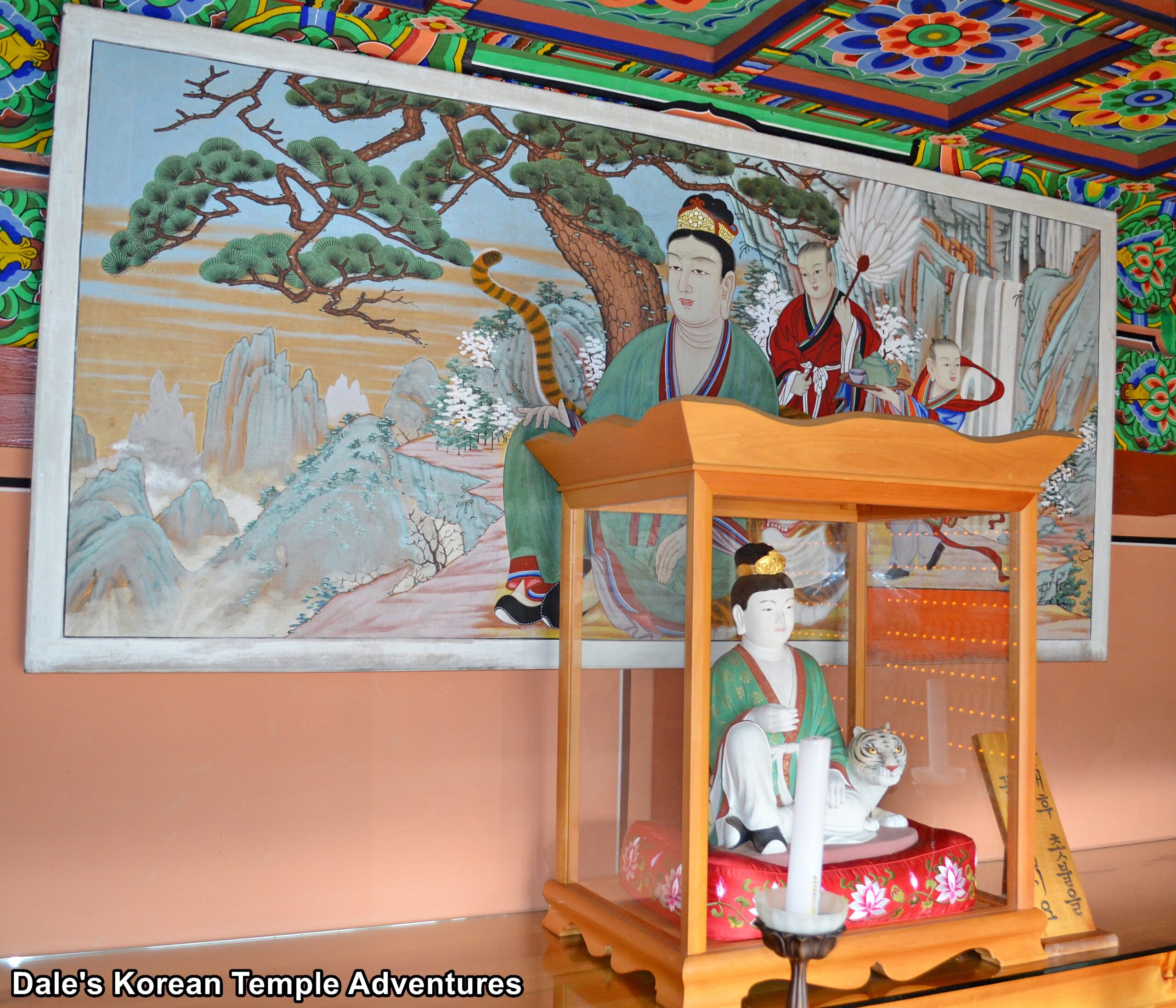Daewonsa Temple – 대원사 (Sancheong, Gyeongsangnam-do)
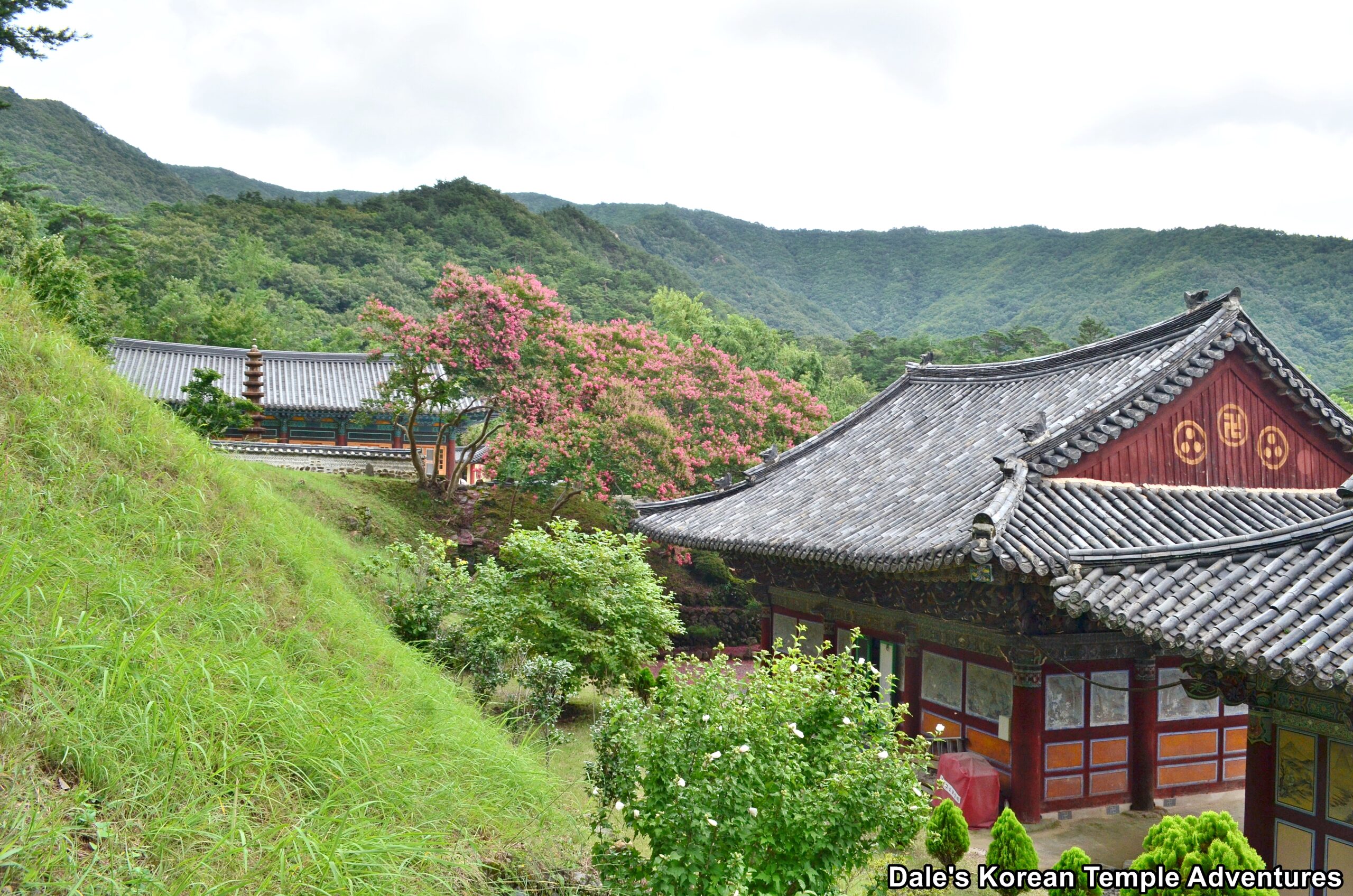
Temple History
Daewonsa Temple in Sancheong, Gyeongsangnam-do, which shouldn’t be confused with the numerous other temples in Korea with the same name, is located in the northeastern part of Jirisan National Park. Daewonsa Temple was first founded in 548 A.D. by Yeongi-josa, who also founded Hwaeomsa Temple in 544 A.D. and Yeongoksa Temple in 543 A.D. It’s believed that Yeongi-josa was from India. Originally, the temple was called Pyeongwonsa Temple. Then during the mid-600s, Jajang-yulsa (590-685 A.D.) purportedly built the Multi-Story Stone Pagoda of Daewonsa Temple.
For the next 1,000 years, the temple ceased to exist. Eventually, the temple was rebuilt only to be destroyed in 1592 by the invading Japanese during the Imjin War (1592-1598). In 1685, the temple was rebuilt, once more, and renamed Daewonam Hermitage. In 1784, the Multi-Story Stone Pagoda of Daewonsa Temple was rebuilt. It was at this time that 72 sari (crystallized remains) were discovered inside the pagoda.
In 1890, the temple was renamed Daewonsa Temple and expanded. Then on January 12th, 1914, the temple was destroyed by fire, once more. Finally in 1917, the temple was rebuilt; this time, with 12 buildings in all. Then another fire consumed part of Daewonsa Temple in 1948 during the Yeosu –Suncheon Rebellion (October – November 1948). The remaining parts of the temple fell into further disrepair during the Korean War (1950-1953). Then in September, 1955, the Buddhist monk Beopil rebuilt and restored Daewonsa Temple. Beopil would remain the abbot of the temple until 1986 upon his death.
Now, next to Unmunsa Temple in Cheongdo, Gyeongsangbuk-do; Sudeoksa Temple in Yesan, Chungcheongnam-do; and Seoknamsa Temple in Ulju-gun, Ulsan, Daewonsa Temple is one of the four major temples for nuns (biguni – 비구니) in Korea. Daewonsa Temple is home to one Korean Treasure, and you might have already guessed it, it’s Multi-Story Stone Pagoda of Daewonsa Temple, which is Korean Treasure #1112.
Temple Layout
The road leading up to Daewonsa Temple is one of the more picturesque that you’ll find at a Buddhist temple in Korea with its cascading stream that flows all the way up to the temple grounds. Purportedly, a dragon lived in this stream for a hundred years.
When you finally do arrive at Daewonsa Temple, you’ll be greeted by a large front facade. Walking up a wide set of stairs, you’ll see a pair of stone lions just in front of the entry gate. The entry gate is a two-story structure. This is the Bongsang-ru Pavilion. The first story now functions as the temple’s gift shop, while the second story is used for large gatherings. Having passed through the Bongsang-ru Pavilion, you’ll notice a compact, yet colourfully painted, Beomjong-gak Pavilion (Bell Pavilion) to your right.
Standing squarely in the main temple courtyard, you’ll find numerous structures awaiting you. To your immediate right is the temple’s administrative office, while to your immediate left are the nuns’s dorms, the Yosachae. Straight ahead of you, on the other hand, is the Daeung-jeon Hall. The exterior walls are adorned with fading Shimu-do (Ox-Herding Murals). Stepping inside the Daeung-jeon Hall, you’ll notice a triad of statues resting under a canopy-free altar. The central image is dedicated to Seokgamoni-bul (The Historical Disciple), while the two standing images that flank Seokgamoni-bul are dedicated to Munsu-bosal (The Bodhisattva of Wisdom) and Bohyeon-bosal (The Bodhisattva of Power). Hanging to the left of the main altar are two shaman murals. The one hanging to the right is dedicated to Chilseong (The Seven Stars), while the other is dedicated to Dokseong (The Lonely Saint). To the right of the main altar is a simplistic Shinjung Taenghwa (Guardian Mural). And on the backside of the main altar is a red mural with Seokgamoni-bul sitting in the centre of a well-populated mural of Bodhisattvas and Buddhas.
To the right of the Daeung-jeon Hall is the Multi-Story Stone Pagoda of Daewonsa Temple. The eight-story pagoda (strange that it has an even number instead of the traditional odd number like three, five, seven, or nine) stands in front of the Sari-jeon Hall. The pagoda rests upon a two-story platform. Additionally, only part of the finial still remains atop the pagoda. The most striking feature about the pagoda is the top platform. Instead of being adorned with reliefs of pillars, the pagoda has four large statues of the Four Heavenly Kings on each of the four corners of the platform. The roof-stones are rather thick, and the corners are slightly turned upwards. According to one temple legend, there’s a strong fragrance that gets emitted from the pagoda when the nation has had a happy event. Another temple legend states that those with a clean spirit are able to see the sari enshrined inside the pagoda through the reflection of the nearby pond. The pagoda was purportedly constructed in the mid-600s by Jajang-yulsa.
To the left of the Daeung-jeon Hall, on the other hand, is the Wontongbo-jeon Hall. This shrine hall is beautifully adorned with various murals including a white-clad image of Gwanseeum-bosal (The Bodhisattva of Compassion) wrapped around its exterior walls. As for the main altar inside the Wontongbo-jeon Hall, you’ll find a serene image of Gwanseeum-bosal. The statue of the Bodhisattva of Compassion rests inside a semi-enclosed altar with wooden lotus flower trim surrounding the altar. To the left of the main altar is a beautiful Shinjung Taenghwa (Guardian Mural). And behind the main altar is a multi-armed and headed mural of Gwanseeum-bosal.
Next to the Wontongbo-jeon Hall are two off-limit structures. The first is the Cheongwang-jeon Hall, which is a hall for novice nuns at the temple. The other is the Yeomhwa-jeon Hall. The final shrine hall in this part of the temple grounds is the Myeongbu-jeon Hall. Sitting on the main altar is a green-haired statue dedicated to Jijang-bosal (The Bodhisattva of the Afterlife), who holds a golden staff in his hands. And he’s joined on either side by the Siwang (The Ten Kings of the Underworld).
Located to the rear of the Wontongbo-jeon Hall, and up the hillside, is the Sanwang-jeon Hall. What’s truly remarkable about this shaman shrine hall is that the Sanshin (Mountain Spirit) inside is female. This female Sanshin is similar to other images of the shaman deity at other temples in Jirisan National Park like at Ssanggyesa Temple. Resting on the main altar, in a glass enclosure, is a statue of a female Mountain Spirit joined by a white tiger. And this statue is backed by a painting with a similar appearance as the statue. Both are graceful in appearance.
How To Get There
If you’re using public transportation, there is no bus that goes directly from the Sancheong Intercity Bus Terminal to Daewonsa Temple. Instead, you’ll need to make your way to the Jinju Intercity Bus Terminal. From here, you’ll need to catch a connecting bus to Daewonsa Temple. The bus to Daewonsa Temple leaves nearly every hour, and it runs from 6:30 a.m. to 8:30 p.m. In total, the bus ride out to Daewonsa Temple from the Jinju Intercity Bus Terminal takes about seventy to eighty minutes (depending on traffic).
However, if public transportation isn’t your thing, you can simply catch a taxi from the Sancheong Intercity Bus Terminal. The taxi ride will take about 25 minutes over 16 km. And it’ll cost you 19,000 won (one way).
Overall Rating: 7.5/10
Daewonsa Temple is an active nunnery with a large population of nuns, so you should be respectful and on your best behaviour. Now, with that being said, there are several highlights to Daewonsa Temple like the beautiful environment that surrounds the temple as part of Jirisan National Park. Another major highlight is the graceful image of the female Sanshin (Mountain Spirit) inside the Sanwang-jeon Hall. A couple other highlights are the rather obvious Multi-Story Stone Pagoda of Daewonsa Temple and the altar image of Gwanseeum-bosal inside the Wontongbo-jeon Hall. The temple is a beautiful mixture for the senses.
